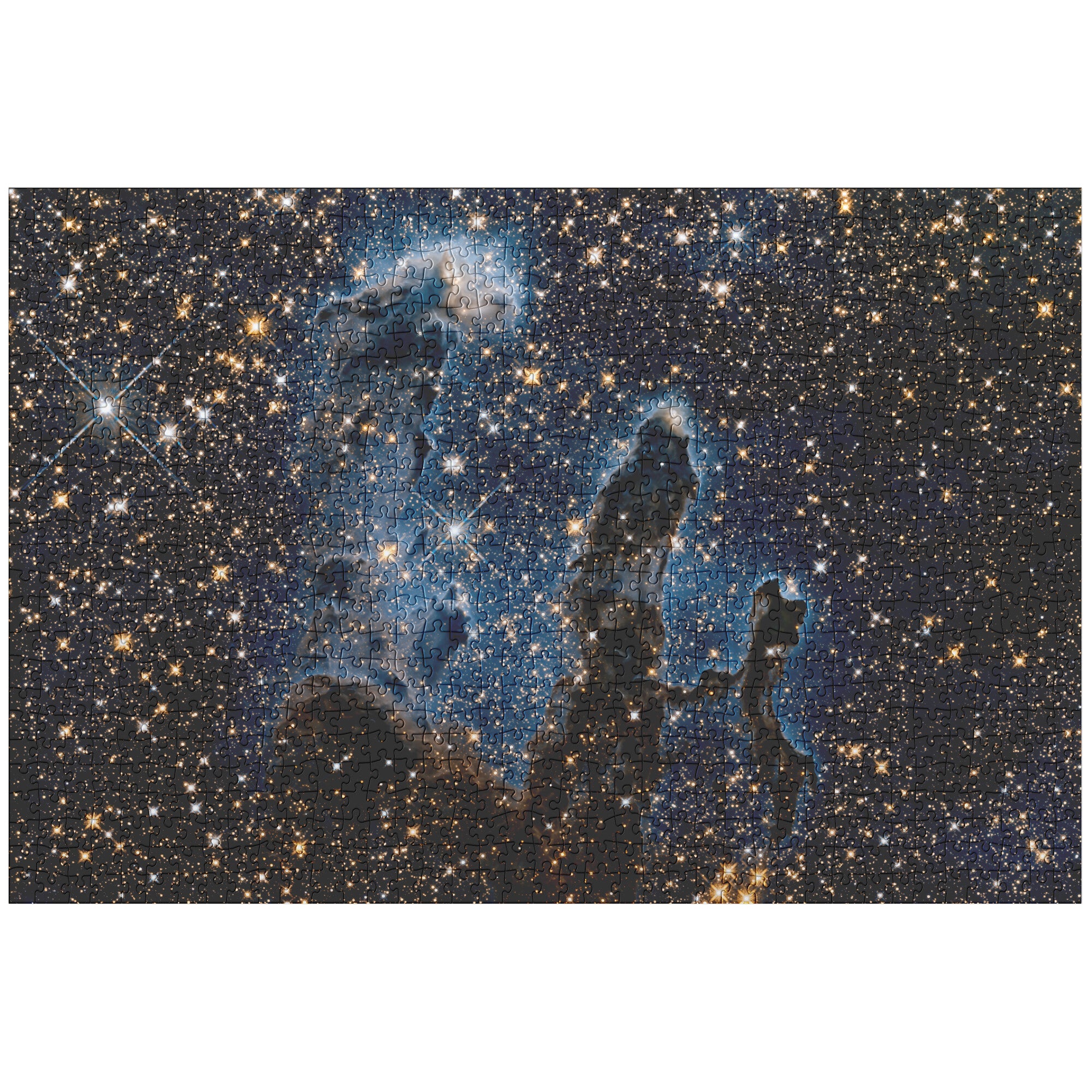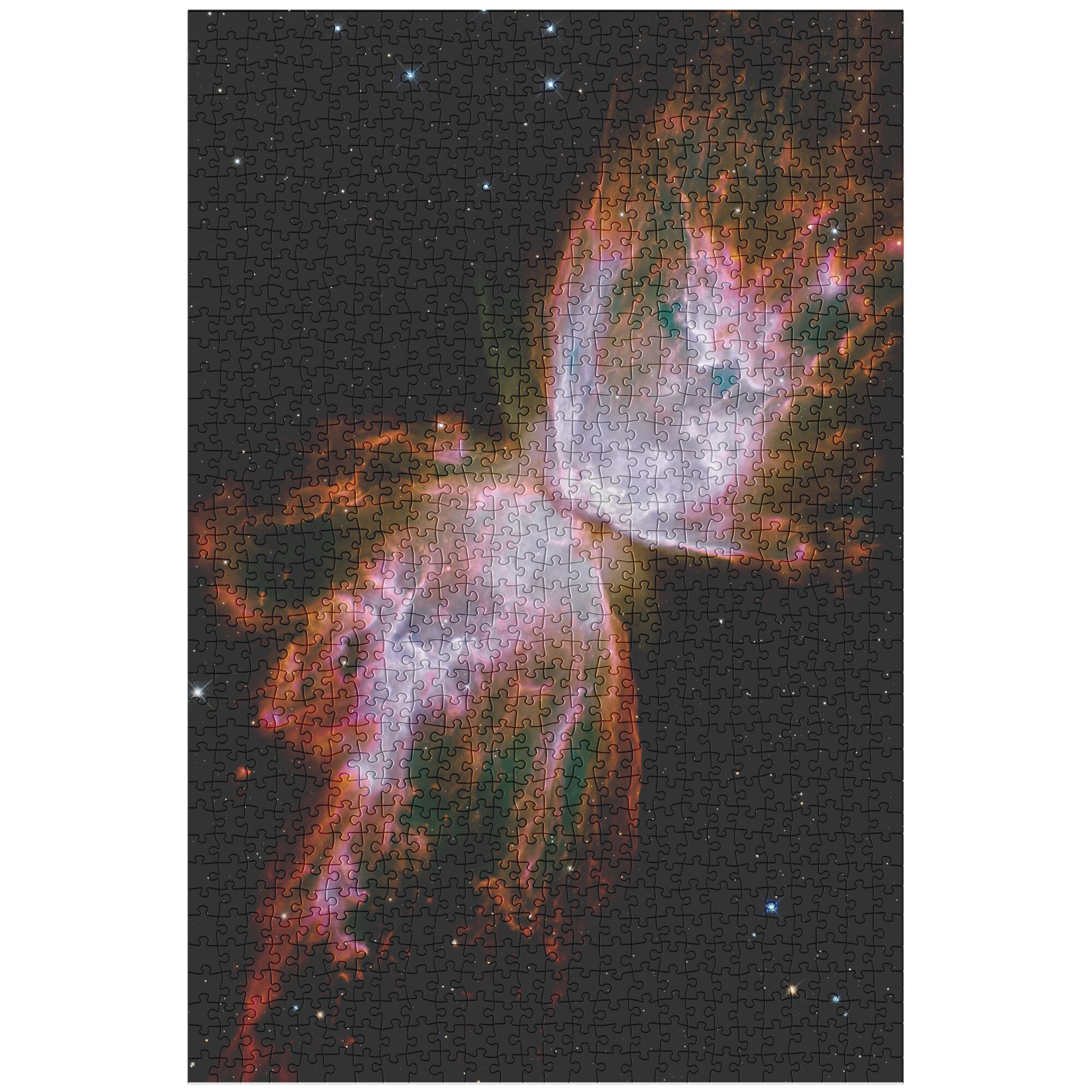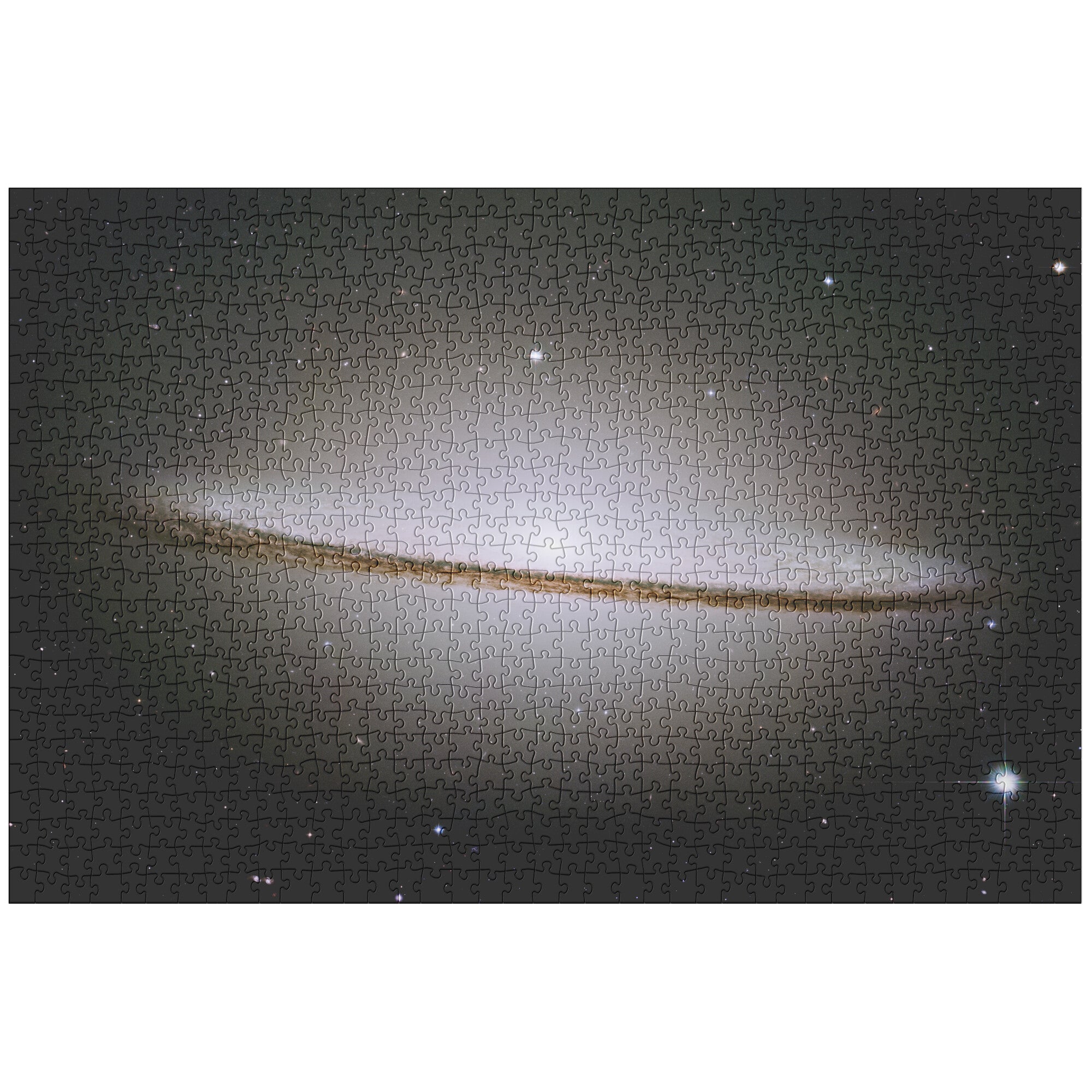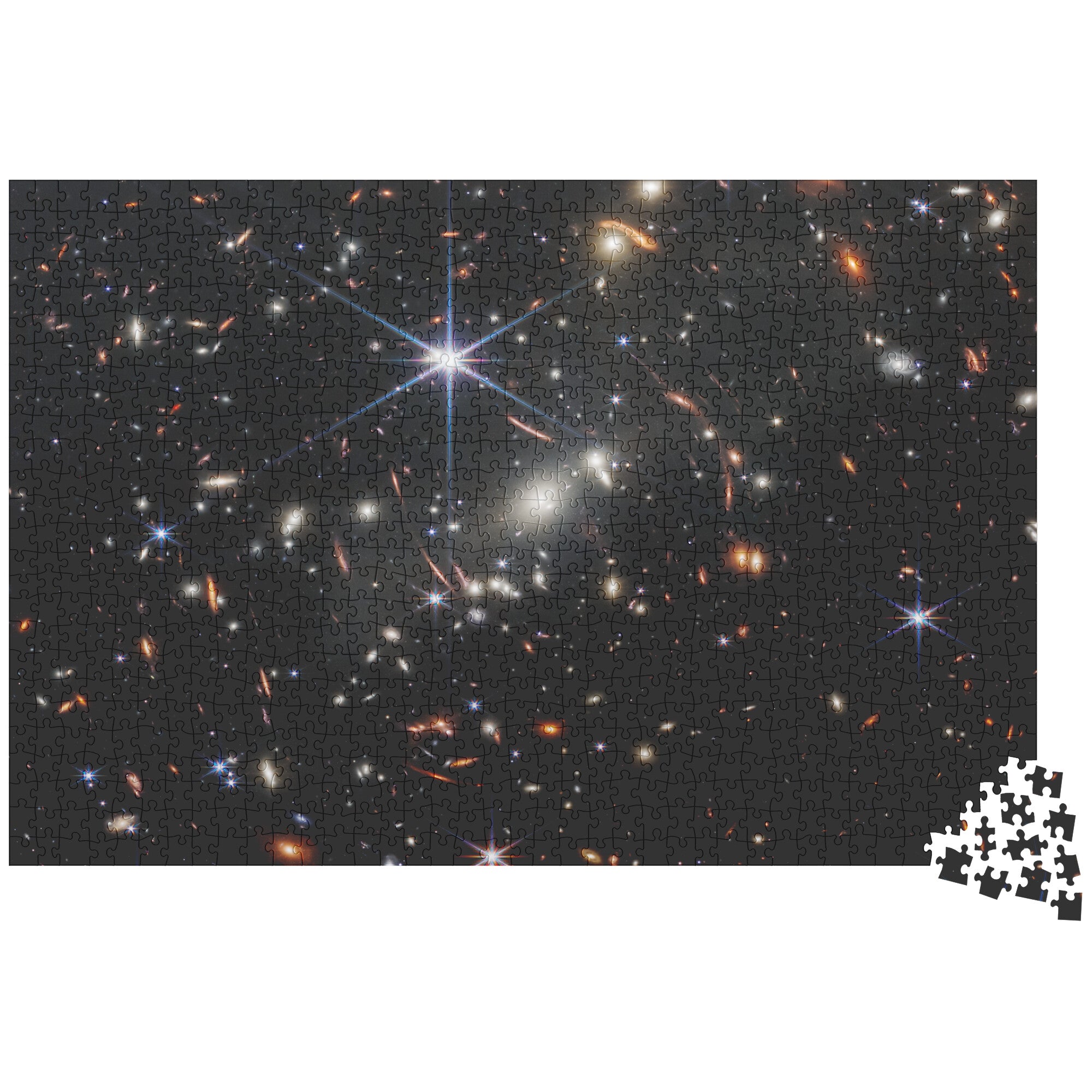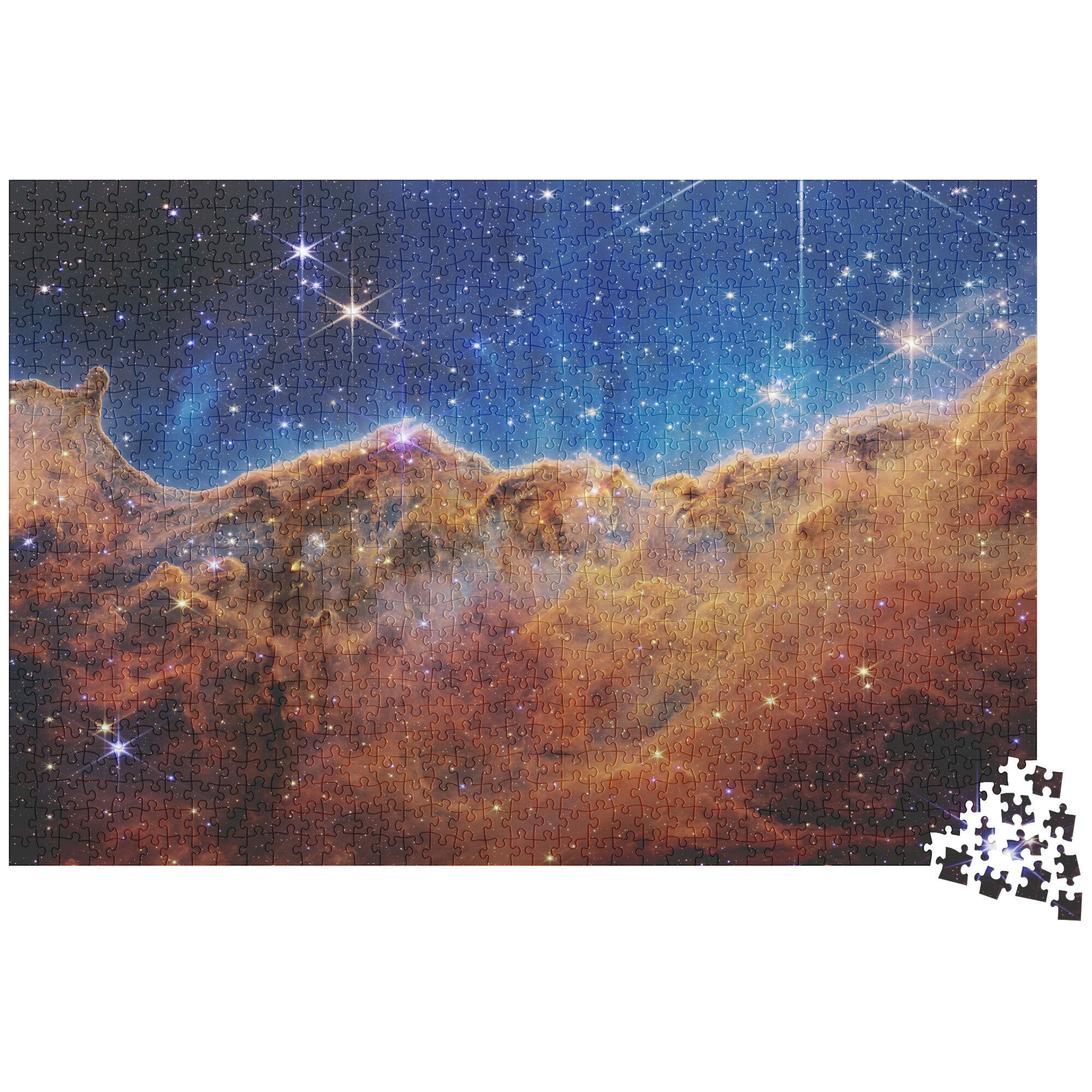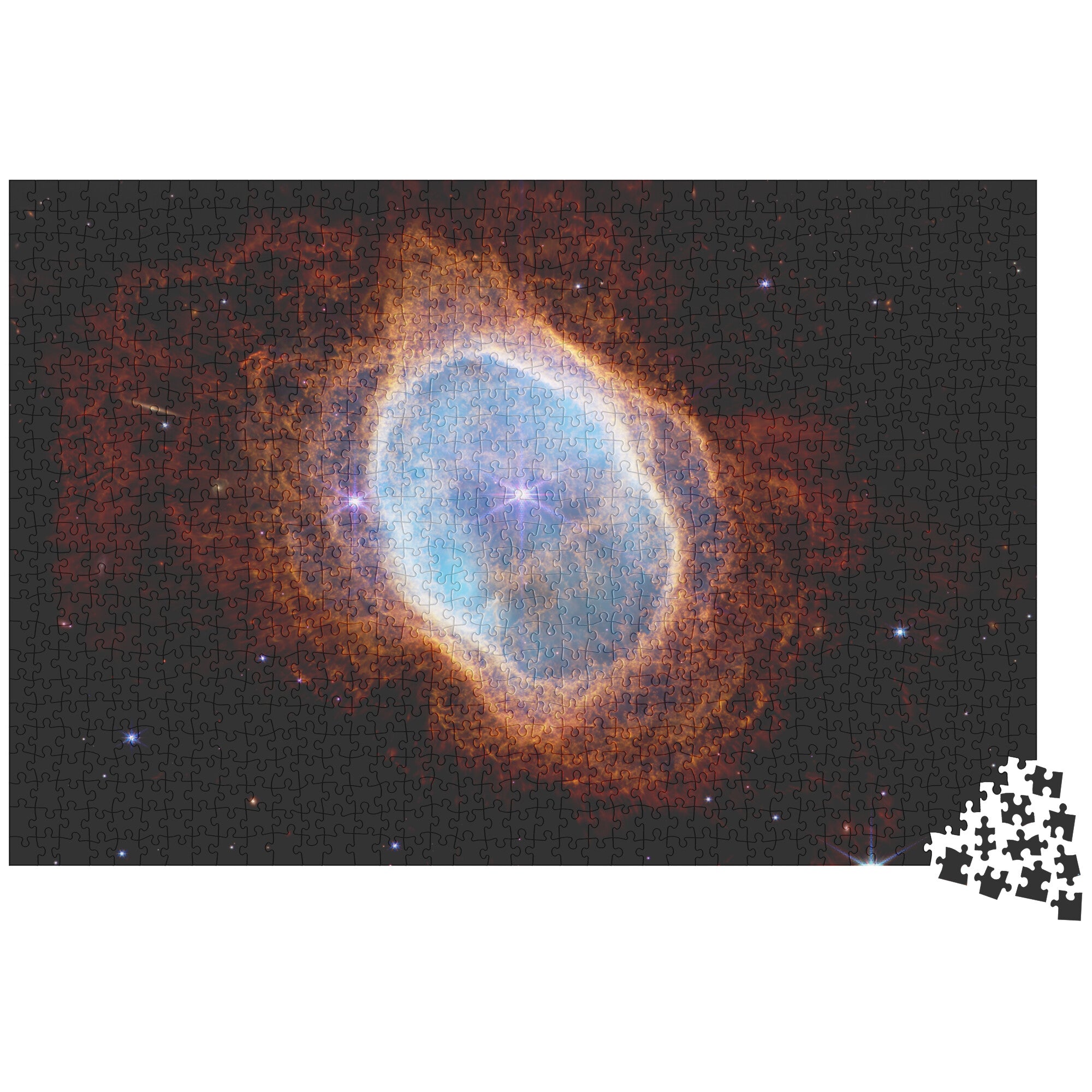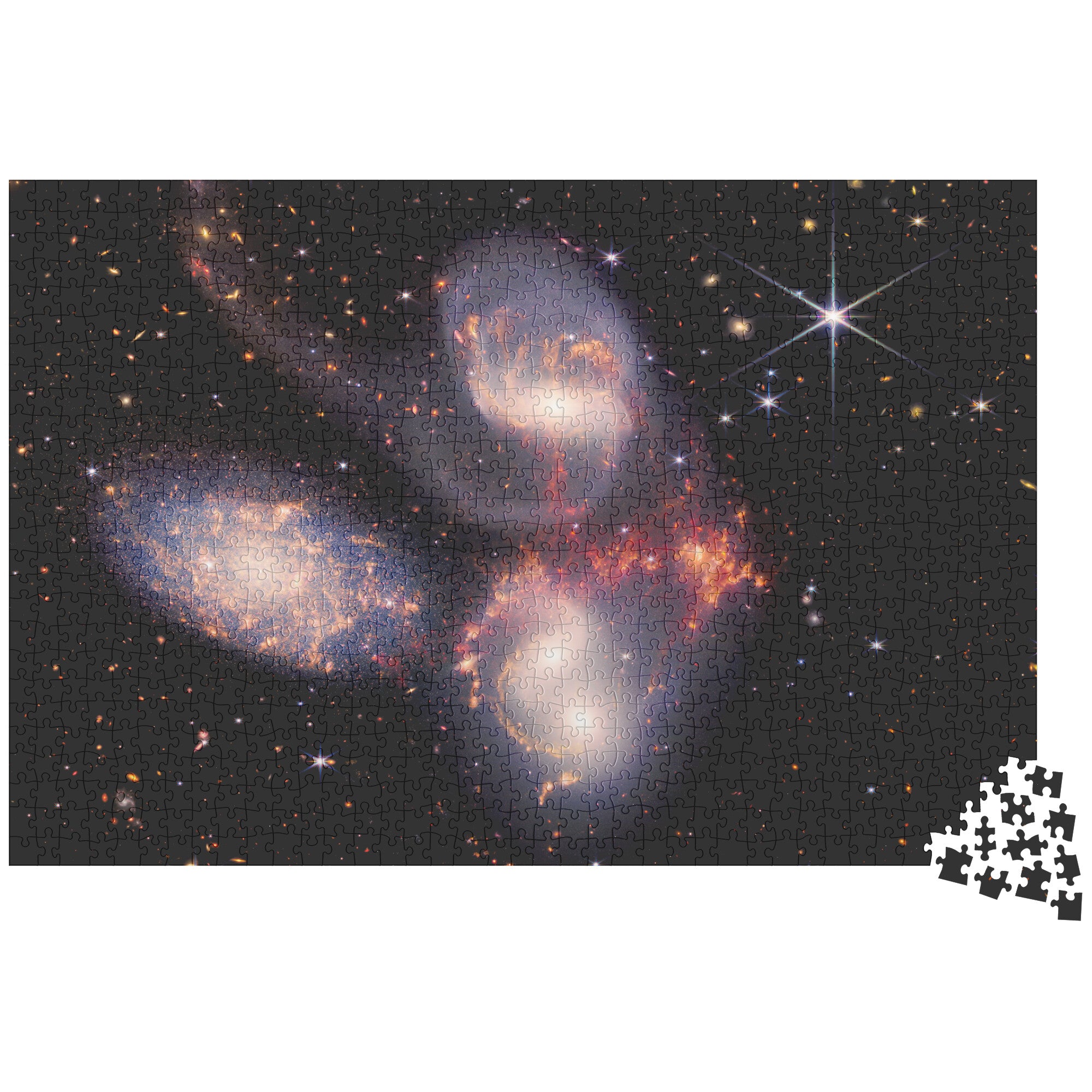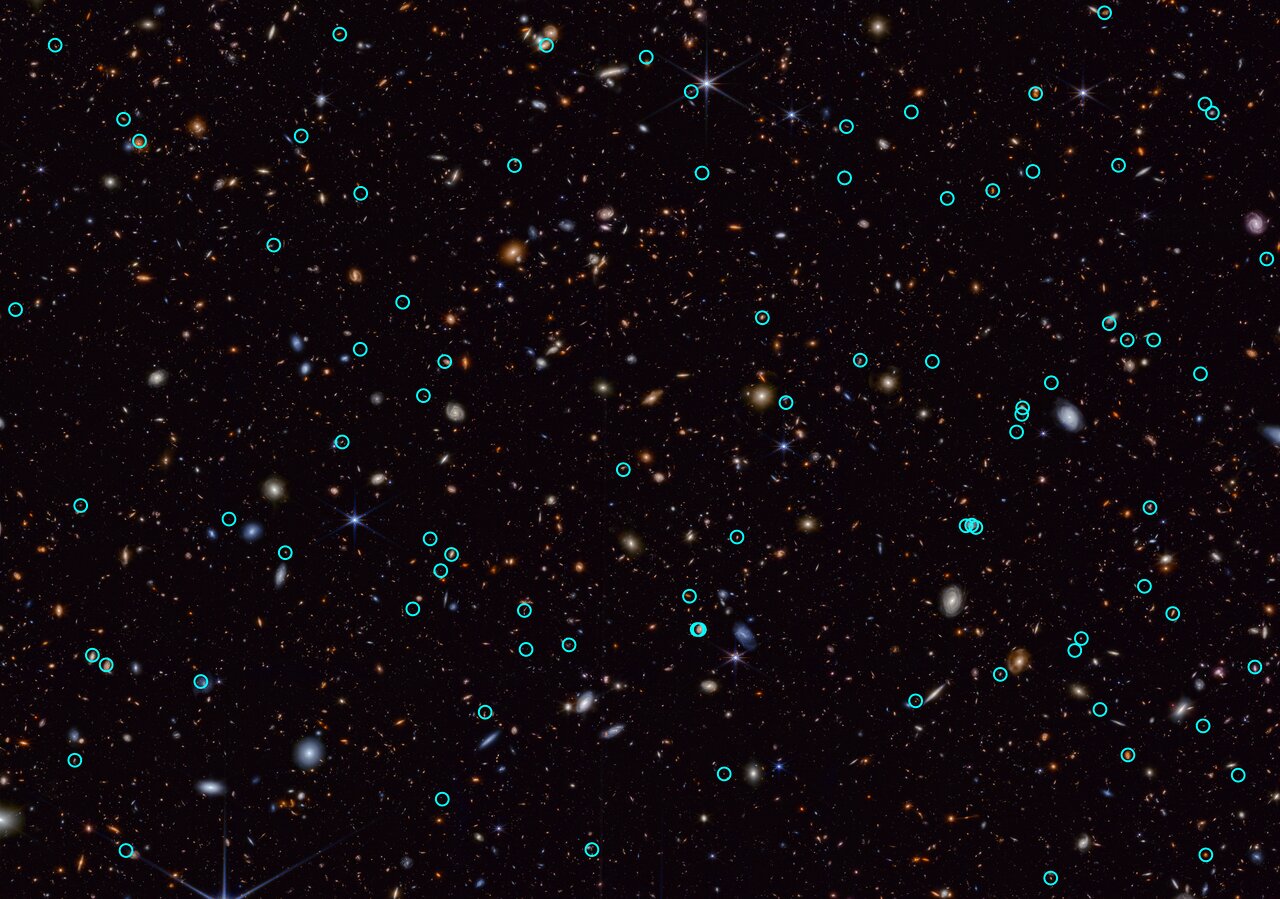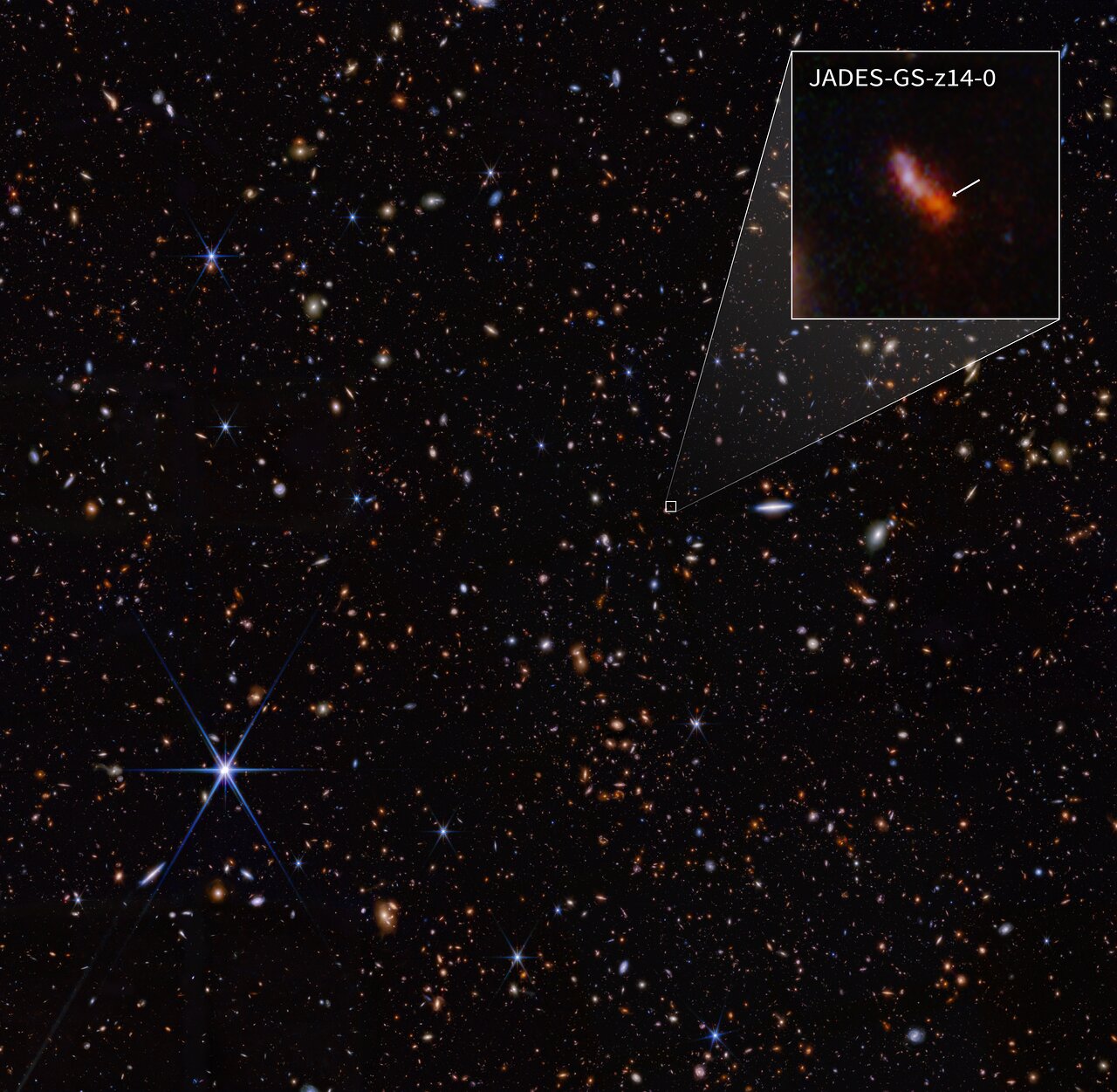The James Webb Space Telescope Feed
The most extensive source of information about James Webb Space Telescope. JWST Feed contains every single piece of data from the telescope, and is updating live every few minutes. Our goal is to make the full JWST data accessible for the public.
- Search
- Filter
- Feed
Harvard ADS: JADES: primaeval Lyman α emitting galaxies reveal early sites of reionization out to redshift z ~ 9
Harvard ADS: Efficient Ionizers with Low H\boldsymbol{\beta}+[OIII] Equivalent Widths: JADES Spectroscopy of a Peculiar High-z Population
Harvard ADS: Ionizing properties of galaxies in JADES for a stellar mass complete sample: resolving the cosmic ionizing photon budget crisis at the Epoch of Reionization
Harvard ADS: Extreme emission line galaxies detected in JADES JWST/NIRSpec - I. Inferred galaxy properties
Harvard ADS: Ionizing properties of galaxies in JADES for a stellar mass complete sample: resolving the cosmic ionizing photon budget crisis at the Epoch of Reionization
Harvard ADS: Ionising properties of galaxies in JADES for a stellar mass complete sample: resolving the cosmic ionising photon budget crisis at the Epoch of Reionisation
Harvard ADS: JADES: Primaeval Lyman-α emitting galaxies reveal early sites of reionisation out to redshift z 9
Harvard ADS: Extreme emission line galaxies detected in JADES JWST/NIRSpec - I. Inferred galaxy properties
Harvard ADS: Size Growth on Short Timescales of Star-Forming Galaxies: Insights from Size Variation with Rest-Frame Wavelength with JADES
Harvard ADS: JADES - the Rosetta stone of JWST-discovered AGN: deciphering the intriguing nature of early AGN
Harvard ADS: To High Redshift and Low Mass: Exploring the Emergence of Quenched Galaxies and Their Environments at 3 < z < 6 in the Ultra-deep JADES MIRI F770W Parallel
Arxiv: Extreme emission line galaxies detected in JADES JWST/NIRSpec I: inferred galaxy properties Published: 1/30/2024 1:57:04 PM Updated: 10/23/2024 7:38:06 PM
Arxiv: JADES -- The Rosetta Stone of JWST-discovered AGN: deciphering the intriguing nature of early AGN Published: 7/11/2024 7:23:28 PM Updated: 10/16/2024 7:07:39 PM
Harvard ADS: JADES Ultrared Flattened Objects: Morphologies and Spatial Gradients in Color and Stellar Populations
Harvard ADS: The star-forming and ionizing properties of dwarf z 6-9 galaxies in JADES: insights on bursty star formation and ionized bubble growth
Harvard ADS: Ionising properties of galaxies in JADES for a stellar mass complete sample: resolving the cosmic ionising photon budget crisis at the Epoch of Reionisation
Harvard ADS: Ionising properties of galaxies in JADES for a stellar mass complete sample: resolving the cosmic ionising photon budget crisis at the Epoch of Reionisation
Harvard ADS: The star-forming and ionizing properties of dwarf z 6-9 galaxies in JADES: insights on bursty star formation and ionized bubble growth
Scientific European | Early Universe: The Most Distant Galaxy “JADES-GS-z14-0" Challenges Galaxy Formation Models Spectral analysis of luminous galaxy JADES-GS-z14-0 based on observations made in January 2024 revealed a redshift of 14.32........... # earlyuniverse # galaxy # galaxyformation # JADES # JADESGSz140 # jameswebb # JamesWebbSpaceTelescope # JWST # Universe Umesh Prasa https://www. scientificeuropean.co.uk/scien ces/space/early-universe-the-most-distant-galaxy-jades-gs-z14-0-challenges-galaxy-formation-models/

Harvard ADS: JADES Ultra-red Flattened Objects: Morphologies and Spatial Gradients in Color and Stellar Populations
Harvard ADS: JADES -- The Rosetta Stone of JWST-discovered AGN: deciphering the intriguing nature of early AGN
Arxiv: JADES -- The Rosetta Stone of JWST-discovered AGN: deciphering the intriguing nature of early AGN Published: 7/11/2024 7:23:28 PM Updated: 7/11/2024 7:23:28 PM
Harvard ADS: A spectroscopic analysis of the ionizing photon production efficiency in JADES and CEERS: implications for the ionizing photon budget
Harvard ADS: JADES: The star-formation and chemical enrichment history of a luminous galaxy at z~9.43 probed by ultra-deep JWST/NIRSpec spectroscopy
JADES: The star-formation and chemical enrichment history of a luminous galaxy at z~9.43 probed by ultra-deep JWST/NIRSpec spectroscopy

Arxiv: JADES: The star-formation and chemical enrichment history of a luminous galaxy at z~9.43 probed by ultra-deep JWST/NIRSpec spectroscopy Published: 7/2/2024 9:00:32 PM Updated: 7/2/2024 9:00:32 PM
Harvard ADS: A NIRCam-dark Galaxy Detected with the MIRI/F1000W Filter in the MIDIS/JADES Hubble Ultra Deep Field
earthling | JADES-GS-z14-0: A New Farthest Object # JWST image that includes the most distant object yet discovered. Most # galaxies formed at about 3 billion years after the Big Bang, but some formed earlier. Pictured in the inset box is JADES-GS-z14-0, a faint smudge of a galaxy that formed only 300 million years after the universe started. The galaxy existed when the universe was only one fiftieth of the its present age. Practically all of the objects in the featured photograph are galaxies. # APOD

Arxiv: Detection of New Galaxy Candidates at z\ > 11 in the JADES Field Using JWST NIRCam Published: 6/8/2024 3:18:13 AM Updated: 6/16/2024 6:01:07 PM
Harvard ADS: The Star-Forming Main Sequence in JADES and CEERS at z>1.4: Investigating the Burstiness of Star Formation
Arxiv: Detection of New Galaxy Candidates at z\ > 11 in the JADES Field Using JWST NIRCam Published: 6/8/2024 3:18:13 AM Updated: 6/8/2024 3:18:13 AM
Harvard ADS: The JADES Transient Survey: Discovery and Classification of Supernovae in the JADES Deep Field
Arxiv: JADES NIRSpec Initial Data Release for the Hubble Ultra Deep Field: Redshifts and Line Fluxes of Distant Galaxies from the Deepest JWST Cycle 1 NIRSpec Multi-Object Spectroscopy Published: 6/4/2023 11:44:23 PM Updated: 5/31/2024 7:07:03 PM
AkaSci 🛰️ | The following graphic illustrates the timeline in the early Universe when galaxy JADES-GS-z14-0 existed. 290 million years after the Big Bang, its light started the 13.5 light year journey to the JWST telescope. The first stars had just started to emerge ~200 million years after the Big Bang. It might require some modifications to current models to explain how JADES-GS-z14-0 grew so massive and voluminous so quickly, that too with multi-generational stars. https://www. snexplores.org/article/what-ha ppened-since-big-bang-physics-universe-cosmic-timeline # JWST 6/n

AkaSci 🛰️ | Redshift for distant objects can be estimated from their light spectra and noting the wavelengths of known emission and absorption lines. The Lyman-α break at 0.1215 µm is a distinct ultra-UV wavelength in astronomy; wavelengths shorter than it are absorbed by H in the source galaxy and in inter-galactic space. Redshift causes these wavelengths to get stretched. For JADES-GS-z14-0, Lyman-α was detected at 1.867 µm, i.e., z = (1.867 - 0.1215) / 0.1215 = 14.32. https:// webbtelescope.org/contents/med ia/images/01HZ0AGNJ96R1GSR956QYMFCRE # JWST 3/n

AkaSci 🛰️ | This week, a science team announced the discovery of JADES-GS-z14-0, a galaxy that existed just 290 million years after the big bang. JADES-GS-z14-0 now holds the record for the most distant known galaxy, with redshift z=14.32. The discovery is based on spectroscopic measurements made using the Webb telescope of light from this distant galaxy that has traveled for over 13.5 billion years. https:// webbtelescope.org/contents/ear ly-highlights/nasas-james-webb-space-telescope-finds-most-distant-known-galaxy # JWST # Webb 1/n

Harvard ADS: JADES - The small blue bump in GN-z11: insights into the nuclear region of a galaxy at z=10.6
Arxiv: JWST-JADES. Possible Population III signatures at z=10.6 in the halo of GN-z11 Published: 6/1/2023 8:50:00 PM Updated: 4/16/2024 6:18:16 PM
Searching for Emission Lines at z > 11: The Role of Damped Lyman-a and Hints About the Escape of Ionizing Photons (JADES-GS-z13-0)

Searching for Emission Lines at z > 11: The Role of Damped Lyman-a and Hints About the Escape of Ionizing Photons (JADES-GS-z11-0)
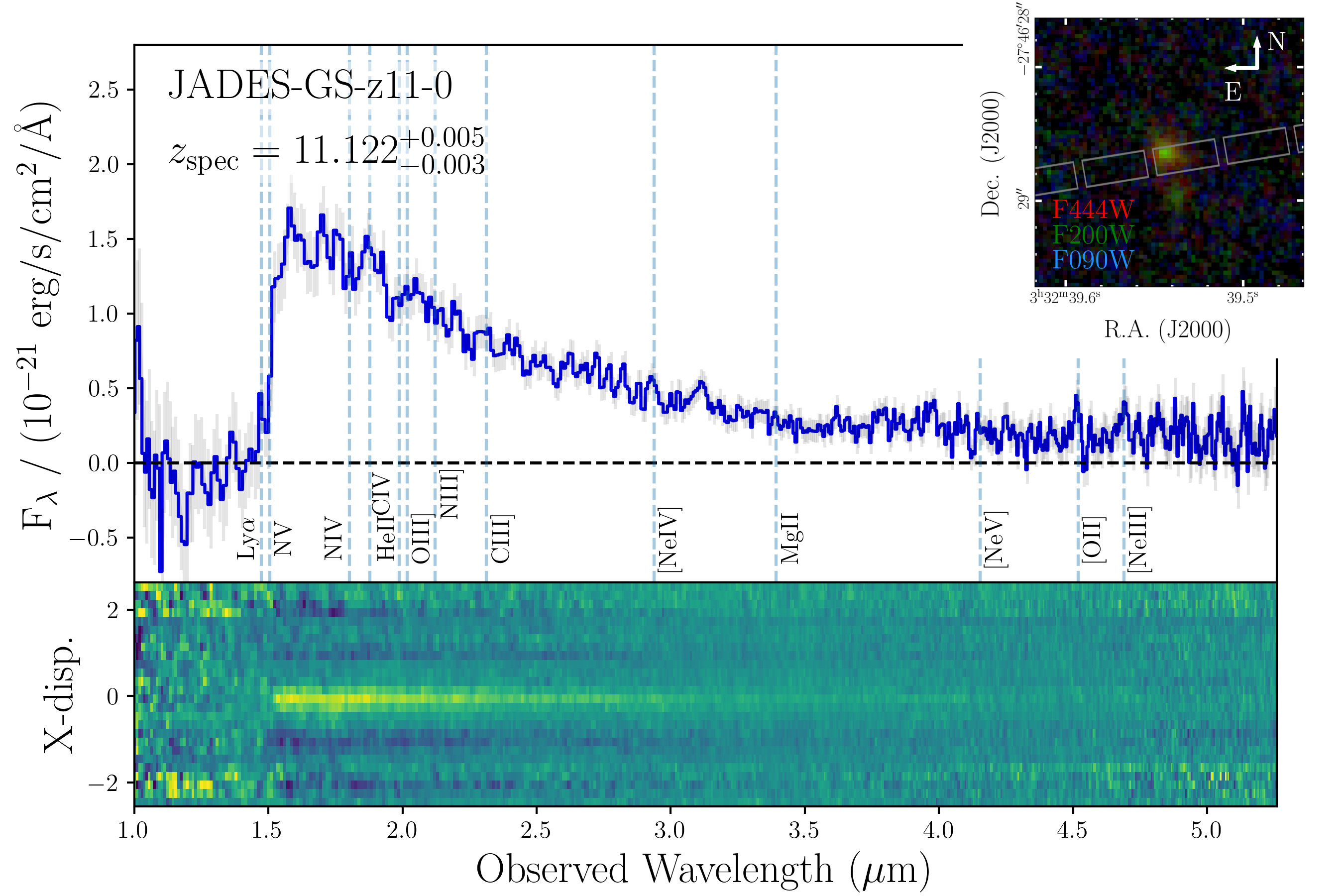
Spatially resolved emission lines in galaxies at 4 <= z < 10 from the JADES survey: evidence for enhanced central star formation

Spatially resolved emission lines in galaxies at 4 <= z < 10 from the JADES survey: evidence for enhanced central star formation

Spatially resolved emission lines in galaxies at 4 <= z < 10 from the JADES survey: evidence for enhanced central star formation






